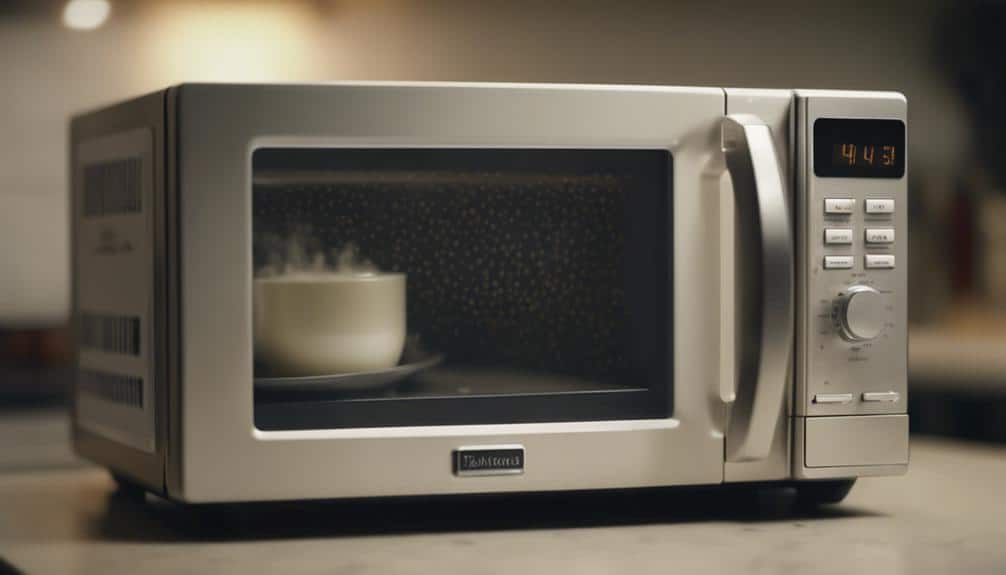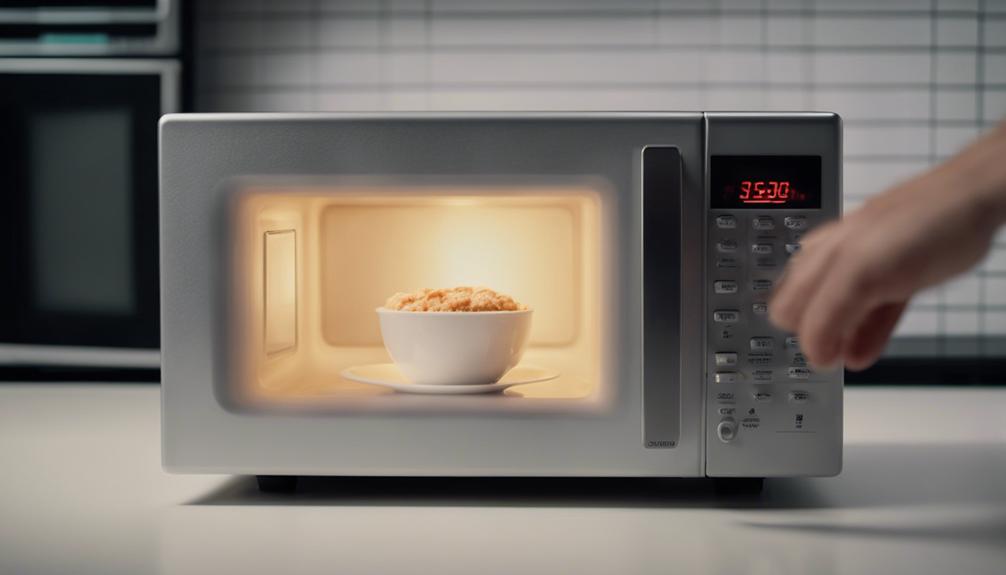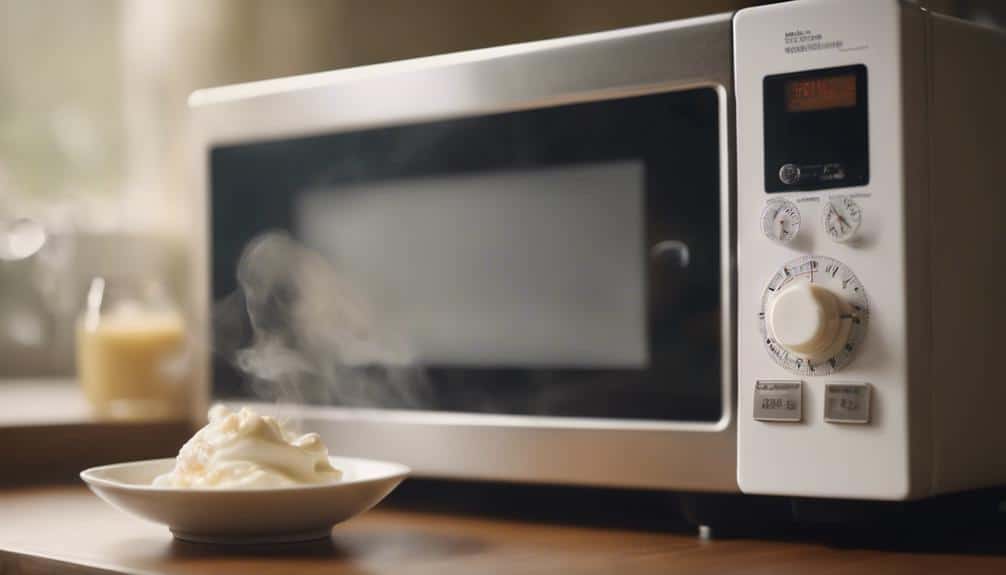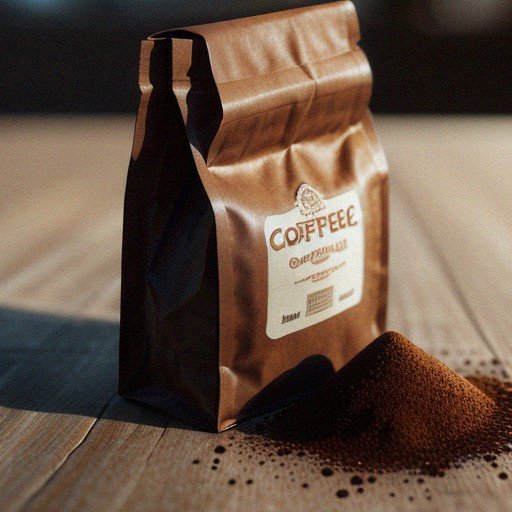How Long to Heat Milk in the Microwave?

As I stood in my kitchen, considering the task of heating milk in the microwave, I found myself pondering a vital question: how long should I actually heat it for? The microwave hummed softly in the background, and I hesitated, unsure of the exact timing needed to achieve the perfect warmth without risking overheating. Curiosity piqued, I decided to set out on a journey to uncover the ideal heating time for milk, a quest that would ultimately lead me to a smooth and delicious outcome.
Ideal Heating Time for Milk
When heating milk in the microwave, it's important to determine the ideal heating time based on the starting temperature and desired warmth. Properly heating milk guarantees it reaches the perfect temperature without overheating or causing uneven heating.
To achieve this, start by placing the milk in a microwave-safe container and setting the microwave for short intervals of 15-30 seconds. After each interval, stir the milk thoroughly to distribute the heat evenly and avoid hot spots.
Monitoring the temperature during heating is essential. For warm milk, begin with a heating time of 1 minute, then pause to check the temperature. Adjust the microwave heating time based on how close the milk is to your desired warmth. This method allows for precise control over the final temperature of the milk, ensuring it's neither too cold nor too hot.
Recommended Microwave Heating Intervals
To guarantee ideal heating results, follow the suggested microwave heating intervals starting with 45 seconds initially. Here are some steps to ensure peak heating of milk in the microwave:
- Heat milk in short intervals: Begin with 45 seconds and continue in 15-second increments to prevent overheating and allow for better control over the final temperature.
- Stir the milk: To promote even heat distribution, stir the milk every 15 seconds while microwaving. This action helps to eliminate cold spots and ensures a consistent warmth throughout.
- Adjust based on microwave power: Depending on the wattage of your microwave, you may need to adjust the heating intervals to achieve the desired warmth without scalding the milk.
- Use a microwave-safe container: To heat milk safely and efficiently, always use a container labeled as microwave-safe. This precaution helps avoid hazards and ensures proper heating without compromising the container or milk quality.
Preventing Milk Overheating

To prevent milk from overheating in the microwave, I suggest avoiding boiling by using short heating intervals and opting for a lower power setting.
Stirring the milk frequently and halfway through the heating process guarantees even distribution of heat and prevents scalding.
Cold milk should be used initially for microwave heating to achieve a consistent temperature without the risk of burning.
Avoid Milk Boiling
Prevent milk from boiling over in the microwave by employing diligent attention to heating intervals and regular stirring. To avoid overheating and maintain the quality of the milk, follow these tips:
- Use Short Intervals: Heat the milk in short bursts, such as 30-second increments, to prevent it from reaching its boiling point too quickly.
- Stir Regularly: Pause the microwave to stir the milk thoroughly. This helps distribute the heat evenly and prevents hot spots.
- Monitor Boiling Point: Keep an eye on the milk to confirm it doesn't boil over. Once it starts bubbling, stop heating immediately.
- Ensure Safety: Test the temperature of the milk by touching it lightly to guarantee it's warm and safe for consumption without being overheated.
Use Low Power
Using low power when heating milk in the microwave is key to preventing overheating and maintaining its nutritional value and taste. Low power settings enable gradual heating, ensuring the milk reaches the desired temperature without boiling. This gentle approach helps retain the milk's nutrients by avoiding excessive heat exposure.
To achieve even heating throughout, microwave the milk on low power for short intervals and remember to stir in between. Opting for low power levels not only prevents scalding but also safeguards the quality of the milk. By carefully selecting the power setting and monitoring the heating process, you can enjoy perfectly warmed milk without compromising its nutritional benefits or flavor.
Achieving Smooth Milk Consistency
When seeking a smooth consistency in microwaved milk, employing short heating intervals with regular stirring is crucial. To achieve the desired smooth texture, consider the following steps:
- Heat milk in short intervals: Start by heating the milk in the microwave for 45 seconds, then pause to stir it. Continue heating for another 45 seconds, stirring again, to guarantee a uniform warmth throughout.
- Stir frequently: While heating the milk in the microwave, stir it every 15 seconds. This practice not only prevents boiling over but also helps distribute the heat evenly, leading to a smoother texture.
- Use medium heat: Set the microwave to medium heat levels when heating the milk. This prevents scalding and maintains a creamy consistency without compromising the smoothness.
- Consistent heating: By heating the milk in shorter intervals and stirring regularly, you can prevent overheating and maintain the quality of the milk, ensuring a smooth and enjoyable texture.
Optimal Temperature Range for Milk

Heating milk to a temperature range of 65-70°C enhances its natural sweetness and enhances safety for consumption. This ideal temperature range ensures that the milk is hot enough to be comforting while not reaching a temperature that would scald the milk or alter its taste. When heating milk in the microwave, it's important to stay within this range to achieve the desired results. The warmth of the milk within this temperature range also plays an important role in blending well with other ingredients, such as when making hot chocolate or adding it to coffee.
Moreover, maintaining the milk at this ideal temperature range isn't only about taste but also about safety. Heating milk too high can create a risk of burns when consumed. Additionally, heating milk beyond this range can cause proteins to denature, affecting the texture and taste. Therefore, keeping the milk warm within the recommended temperature range is key to enjoying its natural sweetness and ensuring a safe consumption experience.
Importance of Stirring During Heating
When heating milk in the microwave, stirring plays a vital role in preventing scorching and ensuring that heat is evenly distributed throughout the liquid. This simple action promotes a creamy texture by avoiding localized overheating that can affect the milk's quality.
Stirring every few seconds maintains a smooth heating process and helps achieve the desired temperature without compromising the milk's nutritional value.
Stirring Prevents Scorching
To prevent scorching and ensure even heat distribution while heating milk in the microwave, diligent stirring at regular intervals is indispensable. Stirring plays a pivotal role in maintaining the milk's quality and taste. Here's why stirring is so vital:
- Prevents Scorching: Stirring milk prevents hot spots, reducing the likelihood of scorching and burnt flavors.
- Ensures Even Heat Distribution: Proper stirring helps distribute heat uniformly, ensuring a consistent temperature throughout the milk.
- Avoids Hot Spots: Regular stirring prevents localized overheating, which can lead to uneven heating and affect the milk's texture.
- Maintains Consistent Temperature: Continuous stirring at intervals helps maintain a steady temperature, preventing fluctuations that could alter the milk's properties.
Ensures Even Heat Distribution
Ensuring even heat distribution through meticulous stirring is essential for achieving consistent temperature and quality when heating milk in the microwave. Stirring during the heating process helps to evenly distribute the heat, preventing hot spots and ensuring that the milk warms up uniformly.
By stirring at intervals, any pockets of heat are broken up, resulting in thorough heating and a smoother texture. This consistent stirring maintains a steady temperature throughout the milk, reducing the risk of scalding or overheating.
Ultimately, a well-stirred milk heats more uniformly, leading to a more consistent temperature suitable for various uses, whether for drinking or cooking. Regular stirring during the microwave heating process is key to achieving a homogenous temperature and texture in the milk, enhancing its overall quality.
Promotes Creamy Texture
By consistently stirring milk during the heating process in the microwave, a creamy texture is promoted through the even distribution of heat.
- Stirring prevents scalding and hot spots in the milk, maintaining a consistent temperature.
- Continuous stirring avoids the formation of a skin on the milk's surface as it heats.
- Regular stirring intervals help prevent milk from boiling over and creating a mess in the microwave.
- Achieving a smooth and uniform heat distribution by stirring enhances the overall quality of the heated milk.
Stirring not only plays an essential role in preventing scalding and hot spots but also contributes significantly to the final texture and taste of the heated milk. By maintaining a consistent temperature throughout the heating process, stirring ensures a velvety and creamy result, free from undesirable textures or burnt flavors.
Ready Milk for Hot Chocolate
When preparing hot chocolate, it's important to heat the milk in the microwave gradually, making sure it reaches the ideal temperature of 65-70°C for a perfect beverage. Start by heating the milk in the microwave for 1 minute on medium power. Then, continue heating in 20-second intervals while stirring in between to achieve the desired temperature range. Stirring helps in achieving an even distribution of heat, preventing scalding or overheating, which can affect the taste and texture of the hot chocolate.
Overheating the milk should be avoided as it can lead to a loss of natural sweetness and essential nutrients. To ensure a creamy and flavorful hot chocolate, always use a microwave-safe container that allows for easy stirring and monitoring of the milk's temperature throughout the heating process. This method offers a quick and efficient way to prepare hot chocolate, giving you a warm and comforting beverage in no time.
Conclusion
Based on the recommended microwave heating intervals and the importance of stirring, heating milk for 45-second intervals, stirring every 15 seconds, guarantees precise temperature control and prevents overheating.
This method allows for a smooth consistency, perfect for adding to hot chocolate or any other beverage.
By following these guidelines, you can enjoy perfectly heated milk without any risk of burning or uneven warming.





